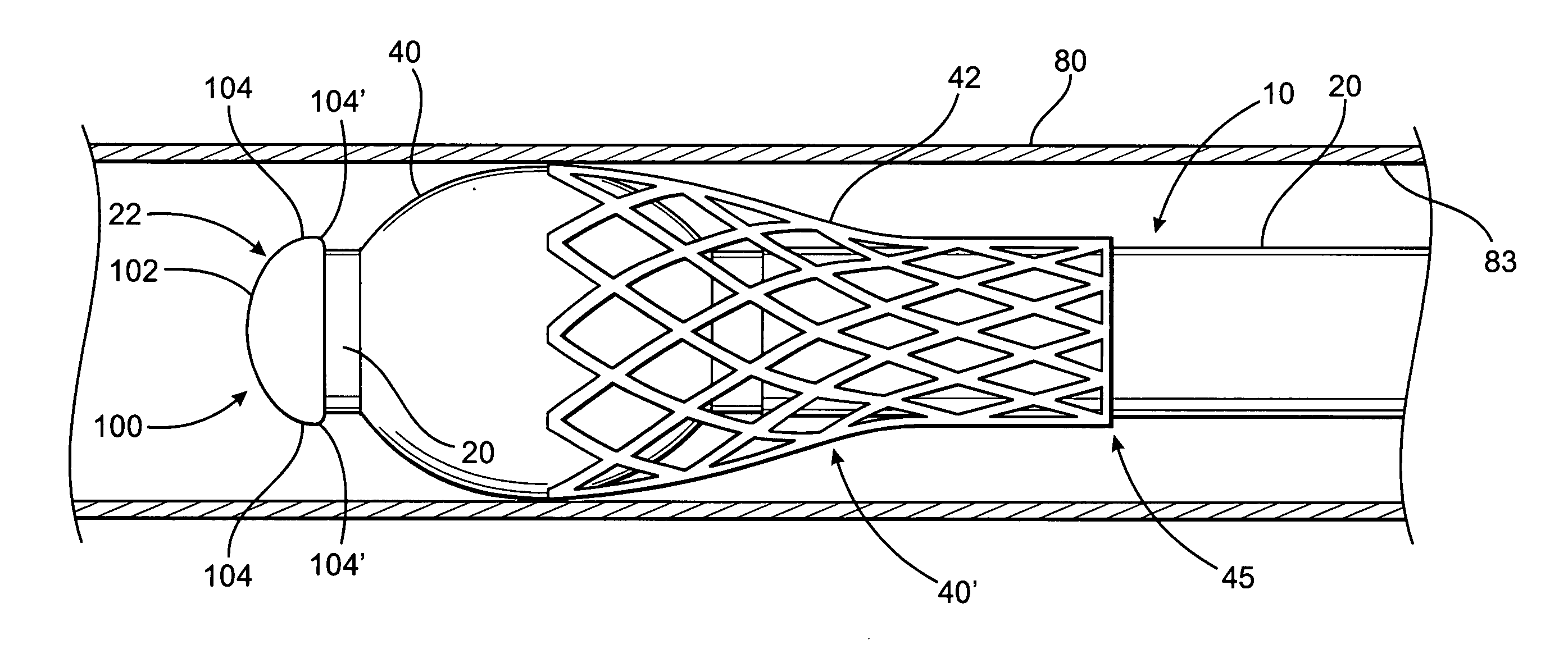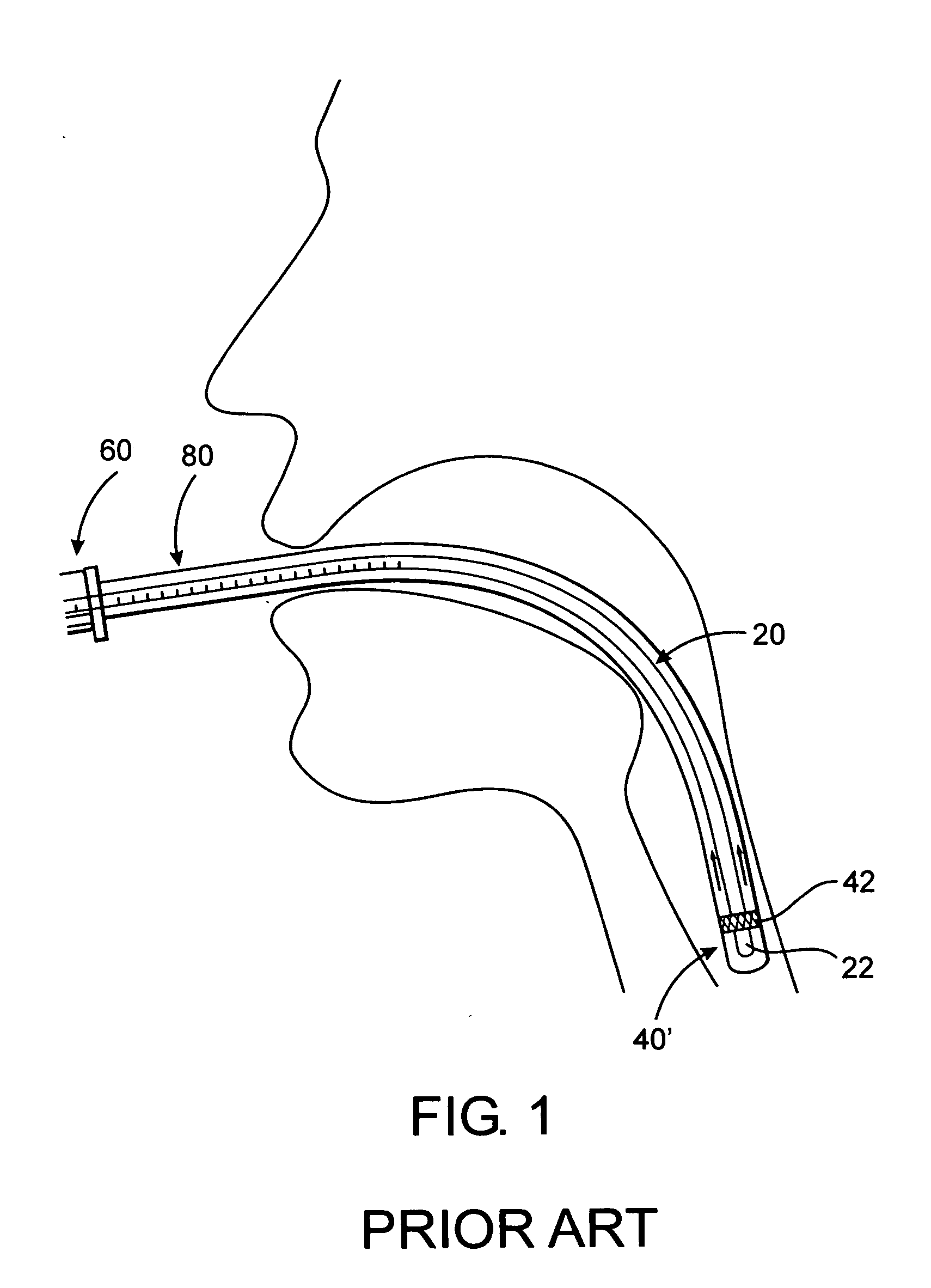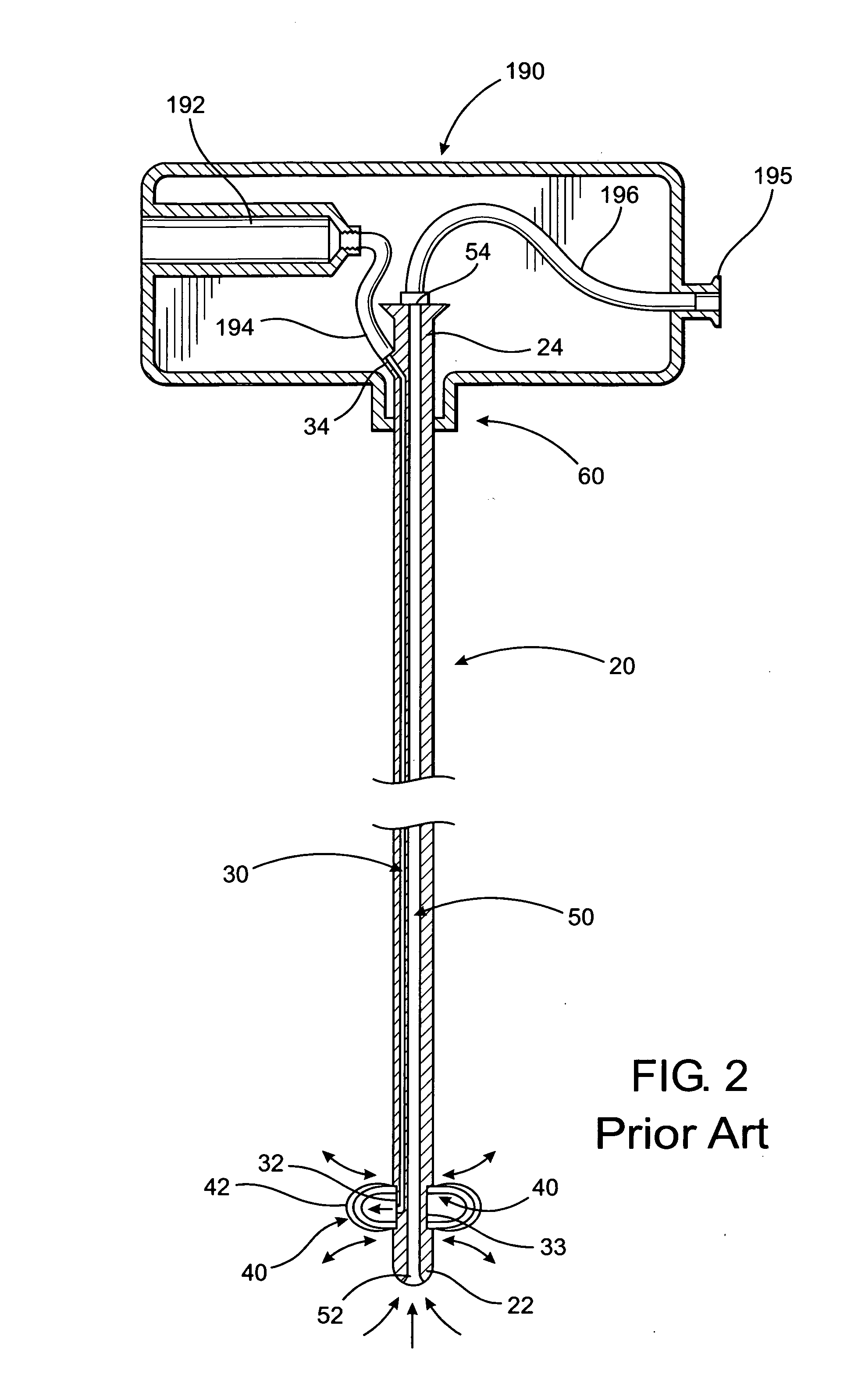Cleaning assembly for an endotracheal tube
a cleaning assembly and endotracheal tube technology, applied in the direction of respiratory apparatus, intravenous devices, respirators, etc., can solve the problems of significant increase in the work of breathing significant prolongation of the incubation period and icu stay of the patient, and added morbidity and hospital costs for the intubated patient. , to achieve the effect of effectively eliminating or significantly reducing the possibility
- Summary
- Abstract
- Description
- Claims
- Application Information
AI Technical Summary
Benefits of technology
Problems solved by technology
Method used
Image
Examples
Embodiment Construction
[0029]Shown throughout the Figures, the present invention is directed toward an endotracheal tube cleaning apparatus, generally indicated as 10. In particular, the endotracheal tube cleaning apparatus 10 is constructed for use with an endotracheal tube 80 that is conventionally utilized to enable a patient to breathe by insertion down the throat of a patient as schematically illustrated in FIG. 1. Generally, after prolonged periods of use, the endotracheal tube 80 will exhibit a buildup of secretions that form on the interior wall surface and can thereby obstruct airflow there through. The endotracheal tube cleaning apparatus 10 of the present invention, among other functions, is structured to facilitate the removal of those secretions in a convenient and effective manner.
[0030]In particular, the endotracheal tube cleaning apparatus of the present includes an elongate tubular member 20 having a first / proximal end 24 (similar to that represented in FIG. 2) and a second / distal end 22....
PUM
 Login to View More
Login to View More Abstract
Description
Claims
Application Information
 Login to View More
Login to View More - R&D
- Intellectual Property
- Life Sciences
- Materials
- Tech Scout
- Unparalleled Data Quality
- Higher Quality Content
- 60% Fewer Hallucinations
Browse by: Latest US Patents, China's latest patents, Technical Efficacy Thesaurus, Application Domain, Technology Topic, Popular Technical Reports.
© 2025 PatSnap. All rights reserved.Legal|Privacy policy|Modern Slavery Act Transparency Statement|Sitemap|About US| Contact US: help@patsnap.com



